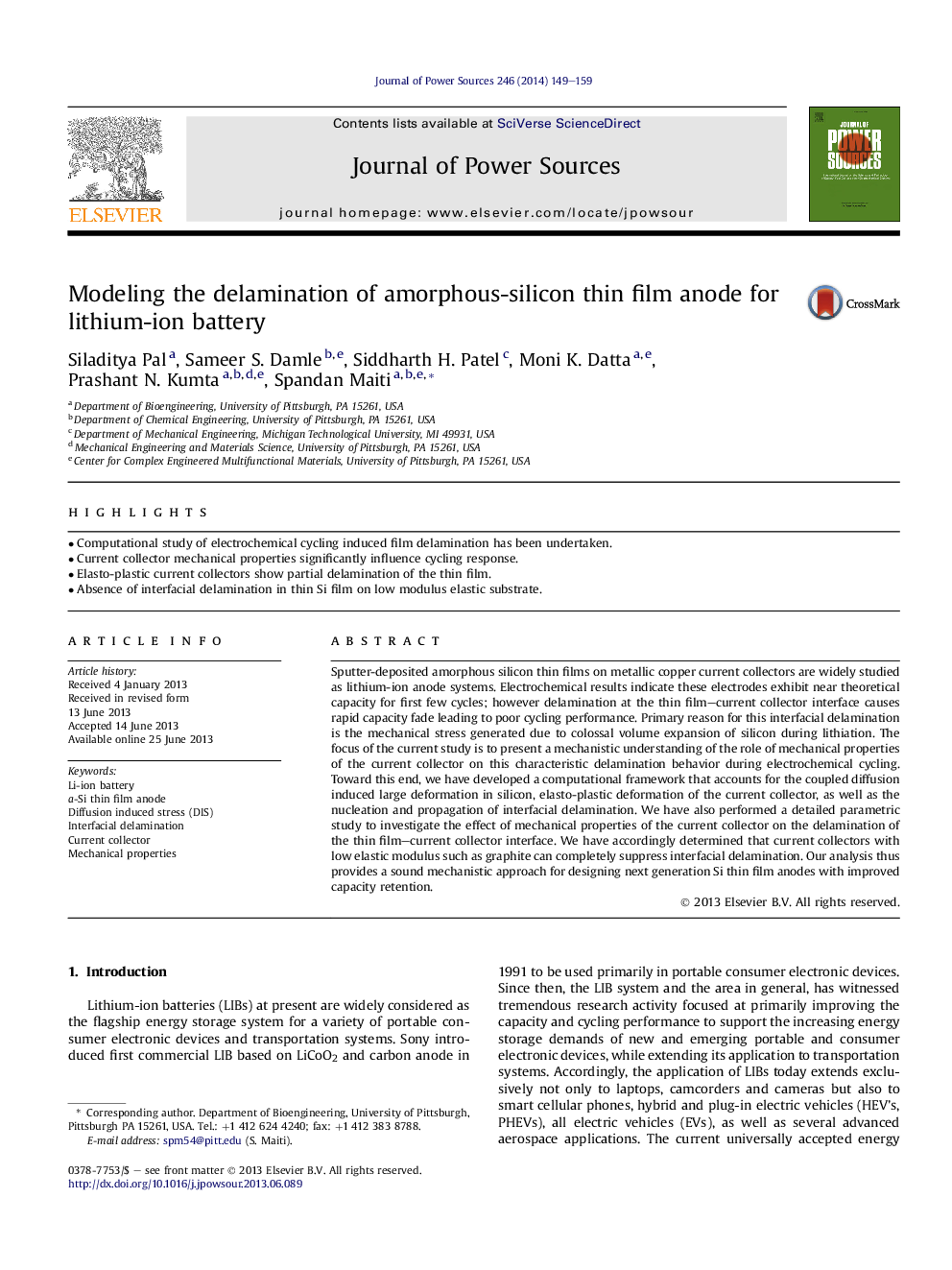| Article ID | Journal | Published Year | Pages | File Type |
|---|---|---|---|---|
| 1284318 | Journal of Power Sources | 2014 | 11 Pages |
•Computational study of electrochemical cycling induced film delamination has been undertaken.•Current collector mechanical properties significantly influence cycling response.•Elasto-plastic current collectors show partial delamination of the thin film.•Absence of interfacial delamination in thin Si film on low modulus elastic substrate.
Sputter-deposited amorphous silicon thin films on metallic copper current collectors are widely studied as lithium-ion anode systems. Electrochemical results indicate these electrodes exhibit near theoretical capacity for first few cycles; however delamination at the thin film–current collector interface causes rapid capacity fade leading to poor cycling performance. Primary reason for this interfacial delamination is the mechanical stress generated due to colossal volume expansion of silicon during lithiation. The focus of the current study is to present a mechanistic understanding of the role of mechanical properties of the current collector on this characteristic delamination behavior during electrochemical cycling. Toward this end, we have developed a computational framework that accounts for the coupled diffusion induced large deformation in silicon, elasto-plastic deformation of the current collector, as well as the nucleation and propagation of interfacial delamination. We have also performed a detailed parametric study to investigate the effect of mechanical properties of the current collector on the delamination of the thin film–current collector interface. We have accordingly determined that current collectors with low elastic modulus such as graphite can completely suppress interfacial delamination. Our analysis thus provides a sound mechanistic approach for designing next generation Si thin film anodes with improved capacity retention.
